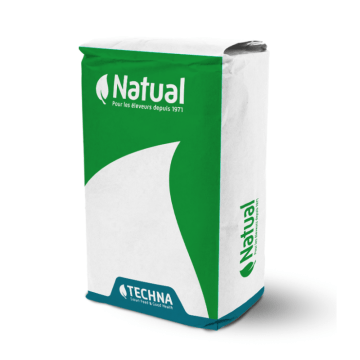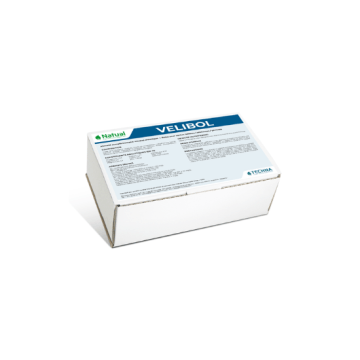Uterine involution is the stage during which a cow’s uterus resumes its regular size after calving. Any delay in the process of involution is likely to perturb the production cycle, to cause reproductive issues and to increase cows’ culling rate. An appropriate scan control is an effective way to spare these animals from such difficulties. It also allows farmers to evaluate their cows’ uterine cycle and to detect the most appropriate time to interfere on the nutritional level.
Uterine involution in dairy cows after calving
Reproductive issues are often associated with cyclical ovarian functions. Yet the uterus — the organ where the embryos grow — should not be overlooked in this respect. Indeed, uterine involution is a natural phenomenon that occurs after calving and the evacuation of the placenta. It is mainly activated by prostaglandins – that is, hormones located in the uterus. These hormones trigger the expulsion of placental residues; they also cause uterine muscles to reduce in size.
The uterus is an organ endowed with great plasticity: it can go from being 25 cm long and weighing 1kg to reaching more than 1 meter long and weighing around 10kg at calving. In conclusion, uterine involution refers to the recovery process it takes for a cow’s uterus to go back to its original size, approximately 30 days after calving.
What are the causes of delayed involutions in dairy cows?
In dairy cows, any delayed involution occurring 35 days post-calving can lead to genuine physiologic dysfunctions. It can also have negative effects on their reproductive capacity. In general, more than 10% of the cows in a herd are prone to these delays. These disorders can triple on farms that are confronted to serious issues related to uterine involution. Causes of these issues include:
- a traumatic calving
- endometrial lesions,
- poor delivery,
- endometritis and metritis
- feed problems (milk fever, ketosis ...).
What are the consequences of delayed involutions in dairy cows?
Delayed uterine involution can have serious consequences on the cow’s health status, its breeding capacities and the overall herd organisation. The oestrus start is postponed; the calving to artificial insemination (IA1) interval is prolonged by 5 to 7 days. The success rate at reproduction has decreased by approximately 20%. In addition, there is a higher risk of developing cystic ovaries and culling rates (+ 5-10%). The cow’s unproductivity is also increased by 18 days thereby worsening the economic impact.
A few tips for avoiding delayed uterine involution in cows
Here are a few precautions to follow, in regards to avoid late uterine involutions in rearing contexts:
- A good dry cow management. Successful dry-off is one of the key factors for optimal reproduction. A good feeding program applied during this period can prevent a maximum of difficulties from occurring after parturition.
- Interventions related to calving and farrowing: neither too much nor too few. The less we interfere at calving, the less postpartum problems are likely to emerge. In cases of difficult parturition, the utmost caution is required (gloves, hygiene products): hand delivery may be more dangerous than a postponed calving.
- Avoid excessive interventions. Uterine involution is a natural phenomenon. Excessive or unwelcome interventions aiming to reduce its impact at the hormonal level are more harmful than beneficial.
- Undertake regular involution check-ups. A control of uterus evolution made through scan monitoring can allow for prompt and efficient assessment of cows’ breeding capacities and their likely return to cyclicity.
In order to anticipate problems related to uterine involution, it is possible to use specific nutritional products along with a scan monitoring to help sustain the cycle of the cow's reproductive organs. Whatever the size of your farm and the causes of delayed involutions affecting your cows, the Techna Group experts will guide you towards the right solution. Feel free to contact us with any questions or comments!
Talk to our experts
Natual is a range of plant-based nutritional supplements designed to support the physiological functions of farm animals and crops, and in particular their natural defences.




